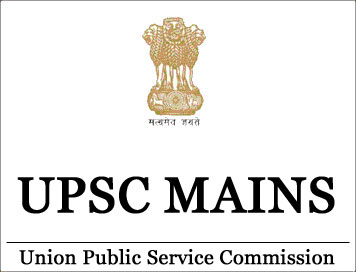(HOT) UPSC Current Affairs 2025 PDF
NEW! The Gist (NOV-2025) | E-BOOKS
(Download) UPSC MAIN EXAM:2020 - GEOLOGY (Paper-2)

(Download) CS (MAIN) EXAM:2020 GEOLOGY (Paper II)
- Exam Name: CS (MAIN) EXAM:2020 GEOLOGY (Paper II)
- Marks: 250
- Time Allowed : Three Hours
SECTION-A
Q1.(a) How do you measure refractive index of minerals and distinguish high and low relief minerals under microscope ?
(b) Write about the symmetry elements of a crystal.
(c) Explain the salient features exhibited by rocks due to thermal metamorphism.
(d) Explain with suitable examples the implications of albite-anorthite solid solutions in the understanding of crystallisation of magma.
(e) How are sedimentary rocks classified in general based on their process of formation ?
Q2.(a) Write about the crystal structure of monoclinic amphiboles and cite mineral examples along with their formula. Add a note on their paragenesis.
(b) Briefly write about the crystal forms of hexagonal system using projection diagrams.
(c) Define pleochroism of minerals and write about the utility of pleochroism to distinguish minerals and provide examples.
Q3.(a) What do you understand by the term texture of a rock ? How do you relate the textures of igneous rocks with the process of magmatic crystallisation ?
(b) Critically discuss the petrogenesis of anorthosites. Comment on the tectonic significance on the distribution of anorthosites.
(c) Explain the effects of prograde metamorphism on impure carbonate rocks.
Q4.(a) Illustrate with neat sketches the sedimentary facies and facies associations that are likely to develop in a progradational deltaic environment.
(b) 'Classification of carbonate rocks based on textural components may be useful for interpretation of depositional environment. Justify the statement with reasons.
(c) How would you distinguish burial diagenetic cements in carbonate rocks from petrographic studies ? Draw neat sketches in support of your answer. 10
SECTION 'B'
Q5.(a) Explain the processes of formation of syngenetic and epigenetic ore deposits with suitable examples.
(b) Describe the geology of the East Coast Bauxite deposits of India.
(c) Discuss various methods of conservation of mineral resources for achieving sustainable mineral development.
(d) Illustrate with examples the role of chemical bonding in minerals in determining certain properties.
(e) Write about the causes of Sea level changes.
Q6.(a) Discuss the salient features of various types of lead-zinc ore deposits. Illustrate Y your answer with schematic diagrams to explain the process of ore formation.
(b) Describe the geonlogical characteristics of important chromite deposits from different parts of the Indian shield.
(c) What is coal bed methane ? How is it exploited ?
Q7.(a) What are the factors which influence the mobility of elements in near-surface environment ? How does understanding the mobility of elements help in choosing indicator elements for a geochemical exploration programme ?
(b) A vein-type copper ore body trending E-W with 90° dip and having strike length of 150 m is exposed on the surface. Four trenches are made across the ore body at constant interval, including one trench each at E and W end of the ore body. Thickness of the ore body and assay value measured from the trenches are given in the table. Assuming that the ore body extends up to a depth of 50 m, and the specific gravity of the ore is 2.8, calculate the tonnage, grade and total copper content of the ore body.
|
Trench Number (E to W) |
Thikness of ore body (m) |
Assay (wt%.Cu) |
|
1 |
2-5 |
1-2 |
|
2 |
2-1 |
1-6 |
|
3 |
1-6 |
2-0 |
|
4 |
1-8 |
1-5 |
(c) Explain the seismic methods of mineral prospecting.
Q8.(a) What do you mean by 'primitive mantle'? Illustrate the cosmochemical and observational constraints on mantle composition.
(b) Explain about the impact of volcanic eruptions on the environment.
(c) Briefly mention measures to mitigate landslides


